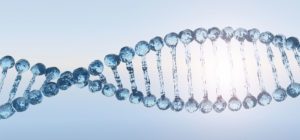Learn the different signs and symptoms of menopause and how to cope through suggested treatments.
RELATED: Menopause Diet | What To Eat While Going Through Menopause In this article:
The Symptoms of Menopause to Watch Out For
What Is Menopause and When Does It Happen?
Menopause marks the end of a woman’s menstrual cycle. In the U.S., the average age of women who reach menopause is 51 years old. Although, some women may experience it in their 30s or 40s. Women who undergo early menopause may have undergone chemotherapy, radiation therapy, or had their ovaries surgically removed. There is also a condition called premature ovarian insufficiency (POI) wherein a woman’s ovaries no longer produce eggs. If you can, be watchful of the signs and symptoms as early as possible and know more about them in the list below. This will help you stay on top of your health as well as better prepare you for this natural biological process which will change the different aspects of your life.
7 Signs of Menopause
1. Irregular Periods
One of the early menopause symptoms is irregular vaginal bleeding. Some women may have their menstrual periods every two to three weeks while some may skip their menses for an entire month or even longer. During perimenopause or menopause transition, there is no way to determine an exact pattern for menses. There is also no specific length on how long a woman will experience irregular periods while in the perimenopause stage. It is a case to case basis. If you’re having irregular periods, it is ideal that you talk to your doctor right away to determine if this is because of perimenopause or an underlying health condition. Trivia: Women who are perimenopausal can still conceive or become pregnant until they reach true menopause, which is the absence of menstrual periods for at least 12 months.
2. Hot Flashes
What is a hot flash? This is a sudden feeling of warmth all over the body but occurring mostly in the chest and head.
Women who experience hot flashes may also experience flushing and sweating afterward. It lasts from 30 seconds to a couple of minutes. The exact causes for hot flashes are not yet clear, but the declining estrogen levels are a possible culprit. The average length is 7 years, but hot flashes can last up to 11 years or more, according to a study. Over time, the frequency and severity of will decrease.
3. Night Sweats
Apart from the hot flashes, night sweats are among of the dreaded symptoms of menopause. They are described as excessive sweating during sleep. Night sweats can result in sleep disturbance. Women who find their clothes drenched from sweat in the middle of the night may have a hard time going back to sleep and feel daytime tiredness the next day. The lack of quality sleep can affect focus, alertness, productivity, and mood.
4. Vaginal Dryness
When the body produces fewer estrogen hormones, the vaginal lining becomes thinner, drier, and less elastic. As a result, menopausal women can suffer from vaginal itching, irritation, and dyspareunia.
Dyspareunia Definition: Localized pain in the vaginal opening or a generalized discomfort during or after sexual intercourse. It can be described as a throbbing, tearing, burning, or aching sensation.
To add, these changes in the vagina can also make women more susceptible to vaginal infections as vaginal lubrication also serves a protective lining.
5. Urethral Lining Dryness
The urethra lining is a tube that transports urine from the bladder to the genitalia for discharge. Similar to vaginal dryness, the declining estrogen levels make the lining thinner, drier, and less elastic. As a result, menopausal women are more at risk of having urinary tract infection (UTI) and urinary incontinence when laughing, coughing, sneezing, or lifting heavy things.
6. Mental and Emotional Changes
Women undergoing menopause may experience memory problems, irritability, frequent mood changes, and feelings of fatigue. While there is not enough research to point to hormonal imbalance as the cause, it is safe to say that all the other symptoms of menopause women have to go through contribute to these negative feelings. Another thing to factor in is the mental aspect of menopause. Some women may have a hard time dealing with the end of their fertility, especially women who still want to get pregnant.
7. Physical Changes
Menopausal women will also have to brave out the physical changes headed their way. Some of these are:
- Weight gain
- Change in fat distribution in the body
- Changes in skin texture
- Onset of adult acne
During menopause, the body also continues to produce testosterone, so women can expect some hair growth on the tummy, chest, chin, and upper lip areas. A more concerning physical change is the loss of bone density. Women who are 35 years old can already start losing bone mass, and the decline becomes more rapid three to four years post-menopause. This is also due to estrogen decline in the body, and this will put menopausal women at an increased risk for osteoporosis. RELATED: Everything You Should Know About Vaginal Dryness During Sex
Treatments for Menopause Symptoms
Please note there is no treatment for menopause. It is a natural biological process and all women will have to go through it. The list below shows the possible treatments you can get to treat, manage, or to help deal with menopause symptoms better.
1. Hormone Replacement Therapy (HRT)
Hormone Replacement Therapy (HRT) or Menopause Hormone Therapy (MHT) is one of the recommended solutions for menopause symptoms. It helps by giving the body more estrogen and progestin to balance off what the body has already lost. HRT is known to be effective in managing symptoms of menopause caused by declining estrogen levels such as vaginal dryness, bone loss, hot flashes, and mood swings. It can be taken in pill form, but there are other alternatives available like hormone patches. A woman can start doing HRT before reaching the age of 60 and can go through the treatment for five years. Not all menopausal women can have HRT. These conditions may bar you from this treatment:
- Uterine cancer or breast cancer
- History of heart disease or stroke
- Pregnancy
- Undiagnosed vaginal bleeding
- Liver disease
- Blood clots with unknown cause
2. Vaginal Estrogen
Vaginal estrogen comes in cream, ring, and tablet forms. They are inserted into or applied topically on the vagina to be absorbed by the tissue lining. This treatment option is recommended for symptoms of menopause like dyspareunia and vaginal dryness.
3. Lubricants, Moisturizers, and Creams
For those experiencing vaginal dryness and pain during sex, vaginal lubricants and moisturizers are available. Though, they’re a quick and temporary fix. Vaginal lubricants come in gel or liquid form, are fast-acting and are applied before sex. The vaginal lining doesn’t absorb the ingredients of lubricants. Vaginal moisturizers are similar to lubricants, except they should be applied daily and not just before intercourse. The lubrication feels more natural, and the vaginal lining absorbs the ingredients. Meanwhile, vaginal creams are thicker than moisturizers but provide long-term relief. They should be applied topically twice to thrice a week but not before sexual intercourse. This late stage in life is not something women look forward to, but learning more about these symptoms of menopause and the treatment options available will better prepare you for what’s to come or has already arrived. The best way to go about it is to discuss your specific condition with your doctor. Together, you can choose the best treatment and create a suitable management plan for you.
Up Next:
- What Foods Make Menopause Worse?
- 7 Signs That You Are In Menopause
- Overcoming Anxiety: Anxiety Symptoms And How To Fight It


